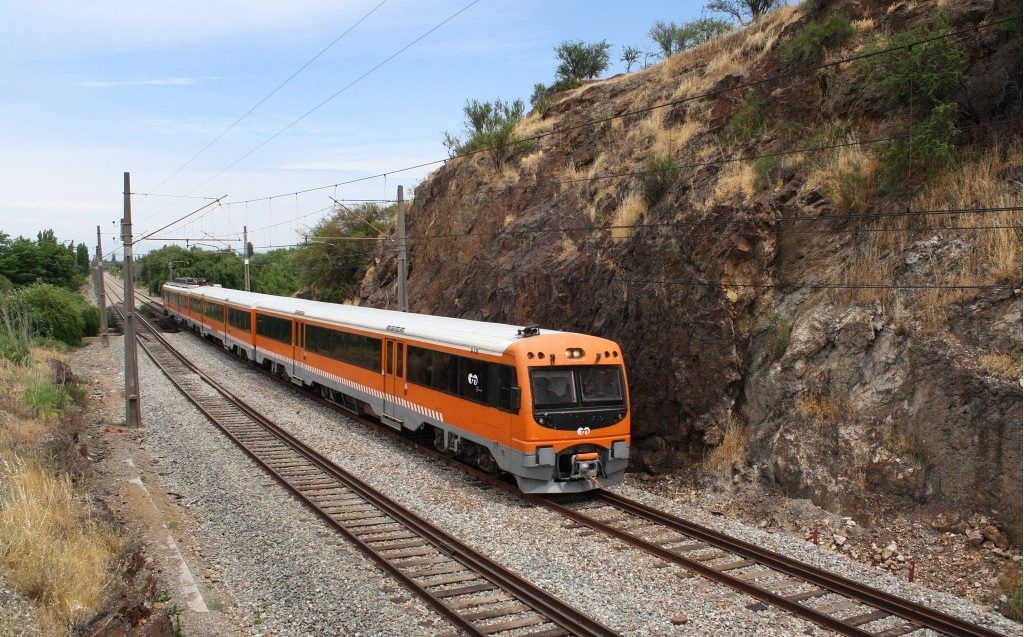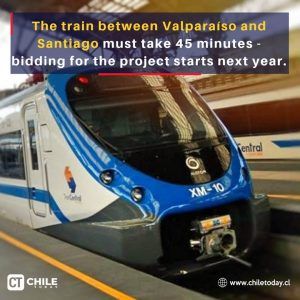
Por TOMÁS CROQUEVIELLE H.
Licenciado en Historia y Periodista
Pontificia Universidad Católica de Chile
Chile’s railroads are experiencing a boom thanks to new public investment, alliances with the private sector, and new approaches to commuter trains. The railway system, that had its golden age in the early twentieth century, and was neglected for decades, now recovers its importance in a new age.
2018 was a great year for the Empresa de los Ferrocarriles del Estado (EFE), the state-run national railway company. According to the company, 47 million passengers were transported by train last year, the highest figure since the creation of EFE more than 135 years ago.
Projections show this number will continue to rise. It is expected that by 2026, the current passenger transport figures will triple, and by 2022 cargo transport will increase by 60% in relation to 2017.
“These numbers show that the development strategy we are promoting is the correct one: commuter trains, more cargo and less deficits. The figures guarantee that the railway is unbeatable over short distances”, EFE president Pedro Pablo Errázuriz told La Hora news outlet.
To reach this prosperous point, the Chilean railroad had to pass a bumpy road: from a high during the early twentieth century to an almost collapse by the 1980s and a recovery at the beginning of the 2000s.
The origins
A symbol of progress, the railroad was one of the great yearnings of Chile during the nineteenth century, and it became one of Chile’s largest engineering feats, promoting the development of towns and cities in large parts of the country.
The first train line was built in the mid-nineteenth century connecting the port of Caldera and the city of Copiapó (in the north) and the mining companies in the area.
In 1884, the Company of the Railroads of the State of Chile was created. The public network was divided into three sections: Valparaíso-Santiago, Santiago-Talca, and Talca to the south. That same year, the construction of the railway bridge, the Malleco Viaduct, the highest railroad bridge in the world at that time, was inaugurated by President José Manuel Balmaceda.

Golden age and neoliberal decline
The high point for Chilean trains was reached on November 23, 1923, when the first longitudinal train that linked the country from Iquique (north) to Puerto Montt (south) departed, marking a milestone, not just for the development of the railroad in Chile, but for the country’s history, because the state was for the first time managing to unite most of the cities and towns of the country, and parts of Peru and Bolivia by Arica, integrating them into the nation and its social and economic development.
This golden age of the train, when the railroad had an almost monopoly in the transportation area, lasted until the 1950s.
Then, beginning in the 1970s a progressive crisis began due to a lack of investment in the maintenance and replacement of equipment.
At the same time, the railway started facing stiff competition from other forms of transportation, particularly buses, cars, and airplanes, due in part to privatizations and higher investments that had been made in those other sectors.
By the 1980s, and with the arrival of the Chilean neoliberal era imposed by the military dictatorship, the train, like many of the state-run public services and industries, was almost completely left to the private sector and the market logic of only running services that are economically self-sustaining.
That prompted the closing of the train lines from Santiago to the north (which meant the closure of the Mapocho Station), Santiago to Valparaíso, and many other routes around the country.

The train renaissance
After decades of neglect, an authentic train “renaissance” began during the Ricardo Lagos administration (2000-2006) with the so-called “Triennial Plan,” embodying the recovery of the role of the state in the economy promoted by the socialist governments at the beginning of this century.
The project provided a strong boost from the state to the Chilean railway system that was intended both to revive rail service from Santiago to Puerto Montt, as well as modernize the Valparaíso Regional Metro train.
In more recent years, a new modality in passenger rail transport, called “commuter trains,” has also been developed. Examples include the Santiago-Nos and Santiago-Rancagua lines (both center), which have resulted in an increase in the frequency of services and a reduction in travel times, improving the quality of life of those who use the trains. Such lines best represent the new approach of the state-run company: short distances.
New projects on the horizon
Currently, and following their strategy of building short-line trains, EFE hopes to develop and enhance other projects, such as the construction of the Quillota-La Calera line (Valparaíso region), the Santiago-Melipilla line (center), the Santiago-Til Til line (center), the new railway bridge over the Biobio river (south), and new trains for the Biobio and Araucanía regions.
EFE has also been open to alliances with the private sector, a major detour from the logic of the twentieth century that trains operate as a purely public service. With seven tourist train lines operating in different parts of Chile, each designed to take advantage of the heritage value of the railroad to improve the areas around it, EFE, with private financial support, has developed an entirely new sub-sector of the national railway industry.
Private investment can also be seen in new passenger train line projects. Investors, in consultation with EFE, have started building a train line that could reduce the commute between Santiago and Valparaíso to just 45 minutes—less than half the time it usually takes by car or bus.

A renewed, worldwide trend
As the Chilean train industry develops with the support of the public and private sectors, the economy of the country could see a positive push, one that could help grow several economic sectors, including construction, transportation, tourism, and international trade—especially helpful in these global, automated times.
Examples of countries developing passenger and freight trains to support their economic growth are easy to find around the world.
One of the most ambitious public infrastructure project in the United States is the bullet train from the state of California. The plan is to connect San Francisco with Los Angeles and promises trains faster than any in Europe or Japan, and dramatically change the mobilization of the state’s population. The future railroad system has a projected cost of up to US$100 billion and it would directly help create thousands of skilled labor jobs.
Across the Pacific, China has its own grandiose railway project: President Xi Jinping’s “Route and Belt Initiative,” a plan to connect two thirds of the world’s population and 70 countries through a network of land and sea links. So if these countries can realize such projects, Chile should be able to do the same, right?
*Imagen de cabecera propiedad de Chile Today.